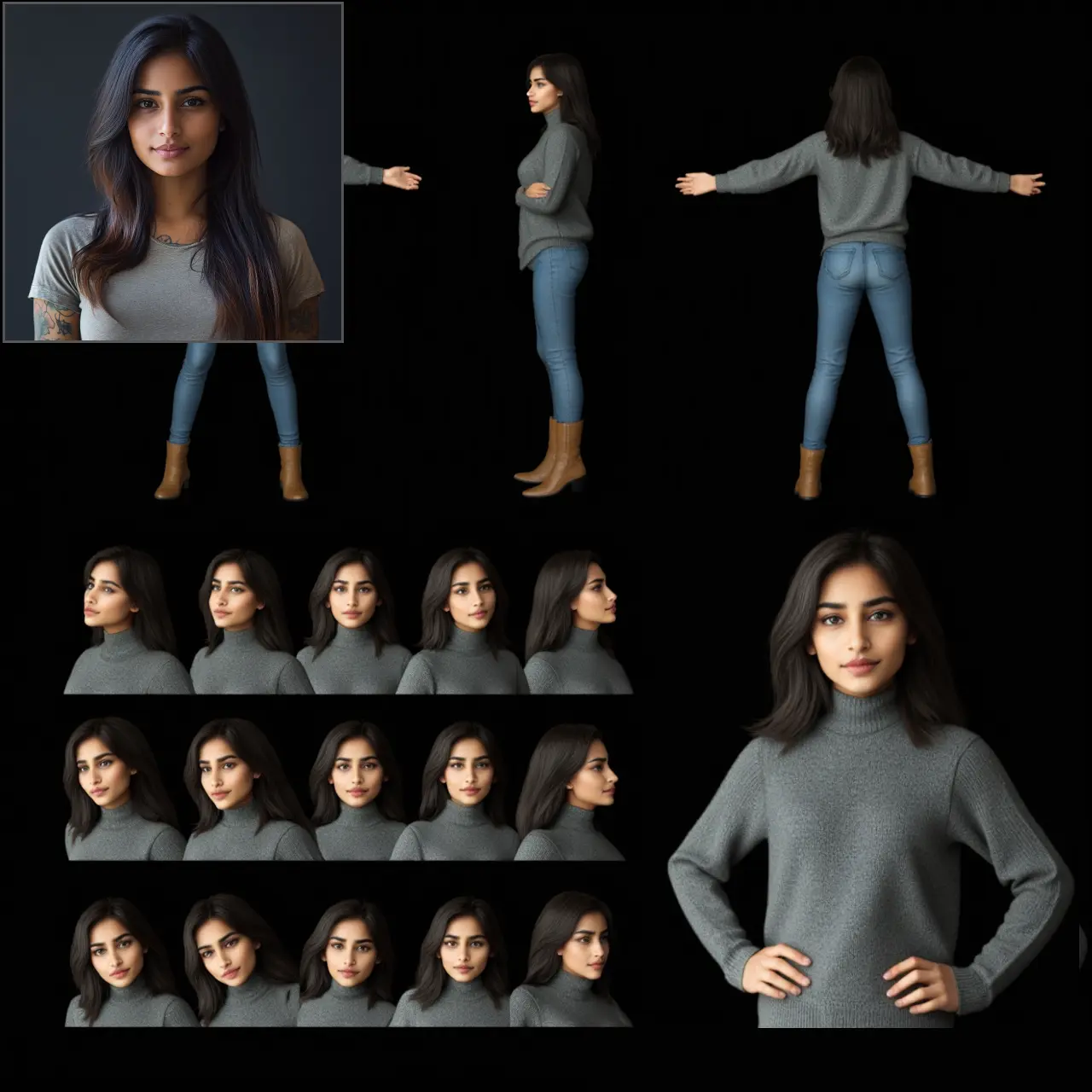ComfyUI Node: 💊 CR Apply LoRA Stack
CR Apply LoRA Stack
Category🧩 Comfyroll Studio/✨ Essential/💊 LoRA
Suzie1 (Account age: 2434days) Extension
Comfyroll Studio Latest Updated
2024-07-24 Github Stars
0.83K
How to Install Comfyroll Studio
Install this extension via the ComfyUI Manager by searching for Comfyroll Studio- 1. Click the Manager button in the main menu
- 2. Select Custom Nodes Manager button
- 3. Enter Comfyroll Studio in the search bar
Visit ComfyUI Online for ready-to-use ComfyUI environment
- Free trial available
- 16GB VRAM to 80GB VRAM GPU machines
- 400+ preloaded models/nodes
- Freedom to upload custom models/nodes
- 200+ ready-to-run workflows
- 100% private workspace with up to 200GB storage
- Dedicated Support
💊 CR Apply LoRA Stack Description
Enhance AI models with LoRA stack for nuanced adjustments and precise control over model output.
💊 CR Apply LoRA Stack:
The CR Apply LoRA Stack node is designed to enhance your AI models by applying a stack of LoRA (Low-Rank Adaptation) parameters to both the model and the CLIP (Contrastive Language-Image Pre-Training) components. This node allows you to fine-tune your models with multiple LoRA configurations, enabling more nuanced and sophisticated adjustments to the model's behavior and performance. By leveraging a stack of LoRA parameters, you can achieve more precise control over the model's output, making it particularly useful for AI artists looking to refine their models for specific artistic styles or tasks. The node processes each LoRA parameter in the stack sequentially, applying the specified strengths to both the model and the CLIP, thus providing a flexible and powerful tool for model customization.
💊 CR Apply LoRA Stack Input Parameters:
model
This parameter represents the AI model to which the LoRA stack will be applied. It is the primary model that you are looking to fine-tune or adjust using the LoRA parameters. The model's performance and output will be influenced by the LoRA stack applied to it.
clip
This parameter refers to the CLIP component associated with the model. CLIP is used for understanding and generating images based on textual descriptions. Applying LoRA parameters to the CLIP component helps in fine-tuning the model's ability to interpret and generate images from text, enhancing the overall performance of the model.
lora_stack
This parameter is a list of tuples, where each tuple contains a LoRA name, a strength value for the model, and a strength value for the CLIP. The LoRA stack allows you to apply multiple LoRA configurations in sequence, providing a detailed and layered approach to model fine-tuning. If no LoRA stack is provided, the node will return the original model and CLIP without any modifications.
💊 CR Apply LoRA Stack Output Parameters:
model
This output is the AI model after the LoRA stack has been applied. It reflects the adjustments and fine-tuning made by the LoRA parameters, resulting in a model that is better suited to your specific needs and artistic goals.
clip
This output is the CLIP component after the LoRA stack has been applied. It shows the enhanced ability of the model to interpret and generate images from text, based on the applied LoRA parameters.
show_help
This output provides a URL to the documentation and help resources for the CR Apply LoRA Stack node. It is a useful reference for understanding how to use the node effectively and troubleshooting any issues that may arise.
💊 CR Apply LoRA Stack Usage Tips:
- Ensure that the LoRA stack is well-curated with appropriate strength values for both the model and the CLIP to achieve the desired fine-tuning effect.
- Use the
show_helpURL to access detailed documentation and examples on how to effectively apply LoRA stacks to your models. - Experiment with different combinations of LoRA parameters to find the optimal configuration for your specific artistic or functional requirements.
💊 CR Apply LoRA Stack Common Errors and Solutions:
"LoRA stack is empty or None"
- Explanation: This error occurs when the LoRA stack parameter is not provided or is empty.
- Solution: Ensure that you provide a valid LoRA stack with at least one LoRA configuration. Check that the stack is not empty and contains the necessary tuples.
"Failed to load LoRA file"
- Explanation: This error indicates that the node was unable to load a specified LoRA file from the given path.
- Solution: Verify that the LoRA file paths are correct and that the files exist in the specified directory. Ensure that the file names in the LoRA stack match the actual file names.
"Invalid strength values"
- Explanation: This error occurs when the strength values for the model or CLIP are out of the acceptable range.
- Solution: Check the strength values in your LoRA stack and ensure they are within the valid range (typically between 0 and 1). Adjust the values as necessary to fall within this range.
💊 CR Apply LoRA Stack Related Nodes
RunComfy is the premier ComfyUI platform, offering ComfyUI online environment and services, along with ComfyUI workflows featuring stunning visuals. RunComfy also provides AI Playground, enabling artists to harness the latest AI tools to create incredible art.




